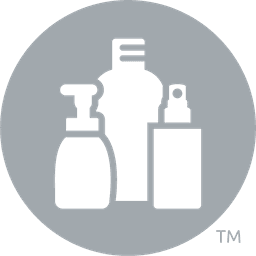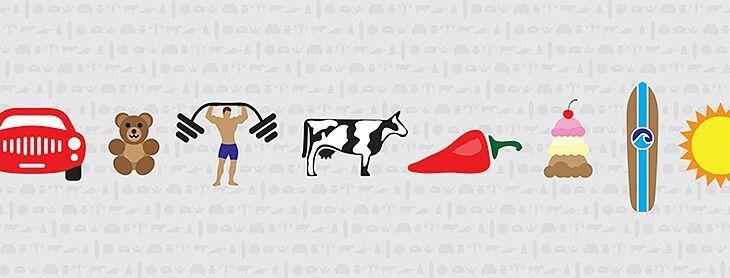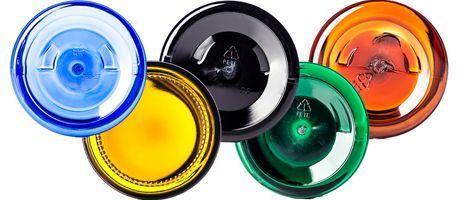Copyrights, Trademarks and Registered Marks


Previous CPS Blog posts will back me up when I say: “Your package design is very, very important!” For proof, you can look here, here, here, and here. A great package design paired with a great product will produce revenue for your company. Once this magical combination is discovered, it's important for you to legally protect these aspects of your unique offering.
So, let's discuss a hypothetical situation. We'll say that you’ve created a high-demand, highly successful product (which, if you're a CPS Blog subscriber, is 423% more probable). Let's say that this product is a revolutionary cleaning agent titled “Clean ShaBAM” and it features a cartoon drawing of a mop with sunglasses named Moppy. We can assume many things about Clean ShaBAM: (1) your product is the most effective cleaner on the market, (2) Clean ShaBAM will become a household name, (3) kids all over the world will recognize Moppy and, (4) those same kids will learn to love cleaning and a whole new generation of clean-conscious individuals will be born. Okay ¦ that may be a bit unrealistic but this is a hypothetical situation”and anything can happen.
Now let's say that your third cousin's ex-fiancé's college roommate starts a competing cleaning product. However, this product does not exhibit the same scientific breakthrough that Clean ShaBAM does. In fact, your third cousin's ex-fiance's college roommate's product breeds bacteria AND has a terrible odor. To continue with the infamy, this competing company chose to name their product Clean ShaBOOM and they even have a very similar cartoon mop with sunglasses”that they've named Shmoppy.
Soon, the evil ShaBOOM is selling their inferior product to ShaBAM's customers and ShaBAM is losing market share because customers are associating Shmoppy (the horrible poor-performing product) with the original revolutionary product endorsed by Moppy. What is the creator of ShaBAM to do in this scenario? “This is wrong! It’s not fair. Moppy is MINE,” you may shout. And you’d be right. But since you haven’t trademarked Moppy, nor your logo, Shmoppy is free to whatever Shmoppy wants to do.
Trademark “ A trademark is used to protect a name, or symbol, or word that is used to differentiate goods and services sold by different companies and to identify where that particular good or service originated. Sounds and colors can even by trademarked. There are two different types of symbols that can identify a trademark.
„¢ – This symbol is located next to the item that you wish to trademark. When a „¢ is placed next to an item, it signifies that there is an interest by a specific party in that particular slogan, symbol, phrase, etc¦
® – This symbol identifies a registered trademark. When you register a trademark with the United States Patent and Trademark Office (USPTO), you are authorized to place the ® symbol next the item. A registered trademark provides increased legal support to a company regarding their trademarked item.
Trademarks can be renewed indefinitely as long as they are being used in the market. The creator of “Clean ShaBAM” might consider registering a trademark on their product name or on the cartoon mop in order to protect their product from having its likeness used by a competitor (like the evil Shmoppy).
Copyrights “ A copyright, which is signified by the symbol ©, is used to protect “works of authorship” according to the Copyright Office. This protection covers writings, music, and works of art. Unlike trademarks, a copyright can expire. A copyright exists at the time a work is created and will last the life of the author plus 70 years. A copyright does not have to be registered but it is beneficial to do so. When you register a copyright, it establishes the effective date of the copyright and creates a public record. A non-registered copyright can only be defended up to a certain point within the court system.
In reference to our previous example, the Moppy could be copyrighted. However, a copyright will only protect one particular drawing of Moppy. If the company were to ever draw Moppy differently, or animate it in a television ad, then those works of art would need to be copyrighted as well. (Note: Since Moppy is used to help identify a particular product, it would be better to use a trademark on this cartoon.)
To learn more about copyrights and trademarks, and to register for both, please visit the U.S. Patent and Trademark Office website at www.uspto.gov for trademarks and the U.S. Copyright Office at www.copyright.gov for copyrights. It's important to protect the product or service that you have created so, like Clean ShaBAM, you can forever enshrine your company as legend within your industry (and keep those evil Shmoppy-folks at bay).





